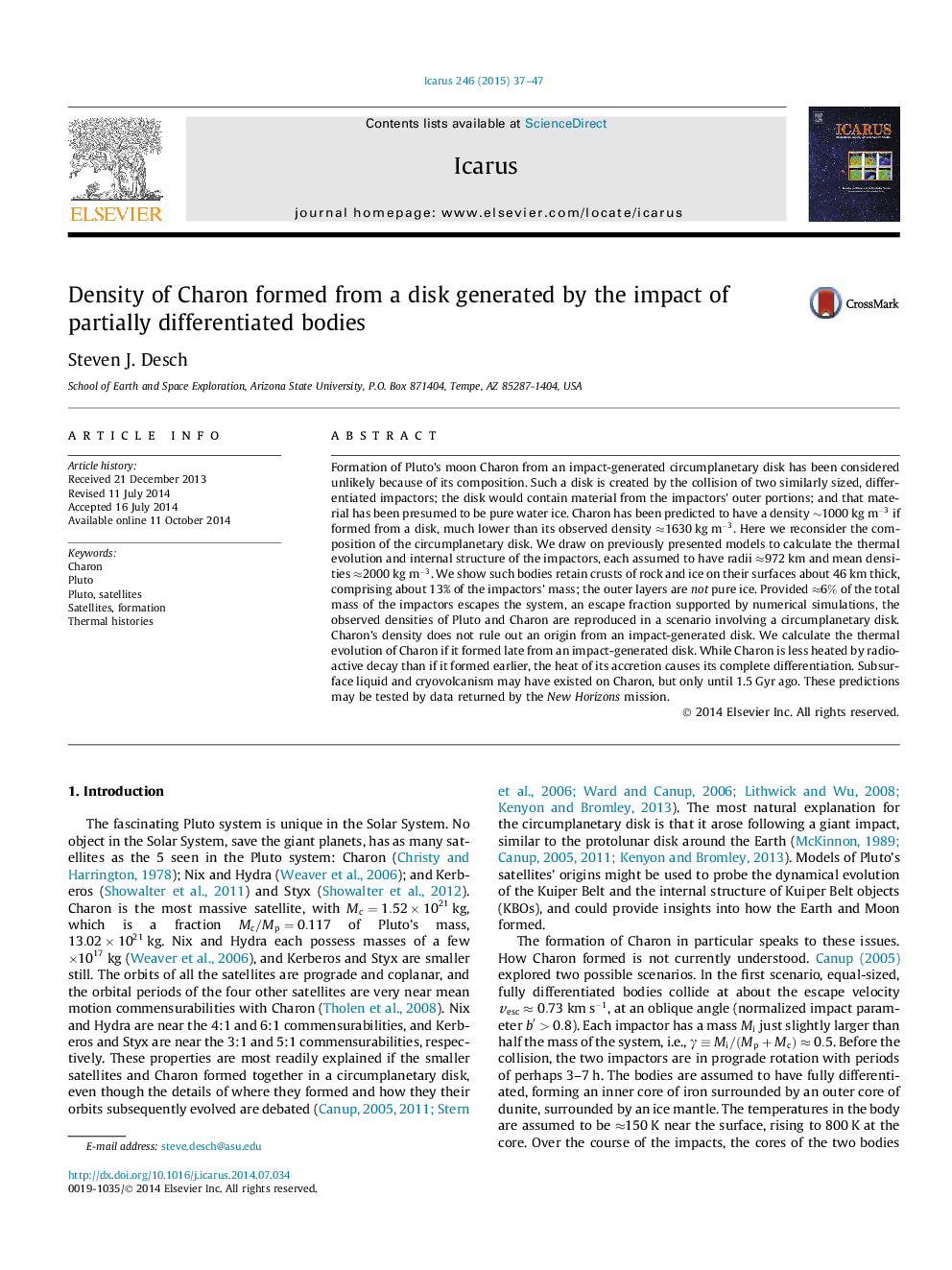| Article ID | Journal | Published Year | Pages | File Type |
|---|---|---|---|---|
| 8137180 | Icarus | 2015 | 11 Pages |
Abstract
Formation of Pluto's moon Charon from an impact-generated circumplanetary disk has been considered unlikely because of its composition. Such a disk is created by the collision of two similarly sized, differentiated impactors; the disk would contain material from the impactors' outer portions; and that material has been presumed to be pure water ice. Charon has been predicted to have a density â¼1000kgm-3 if formed from a disk, much lower than its observed density â1630kgm-3. Here we reconsider the composition of the circumplanetary disk. We draw on previously presented models to calculate the thermal evolution and internal structure of the impactors, each assumed to have radii â972Â km and mean densities â2000kgm-3. We show such bodies retain crusts of rock and ice on their surfaces about 46Â km thick, comprising about 13% of the impactors' mass; the outer layers are not pure ice. Provided â6% of the total mass of the impactors escapes the system, an escape fraction supported by numerical simulations, the observed densities of Pluto and Charon are reproduced in a scenario involving a circumplanetary disk. Charon's density does not rule out an origin from an impact-generated disk. We calculate the thermal evolution of Charon if it formed late from an impact-generated disk. While Charon is less heated by radioactive decay than if it formed earlier, the heat of its accretion causes its complete differentiation. Subsurface liquid and cryovolcanism may have existed on Charon, but only until 1.5Â Gyr ago. These predictions may be tested by data returned by the New Horizons mission.
Related Topics
Physical Sciences and Engineering
Earth and Planetary Sciences
Space and Planetary Science
Authors
Steven J. Desch,
